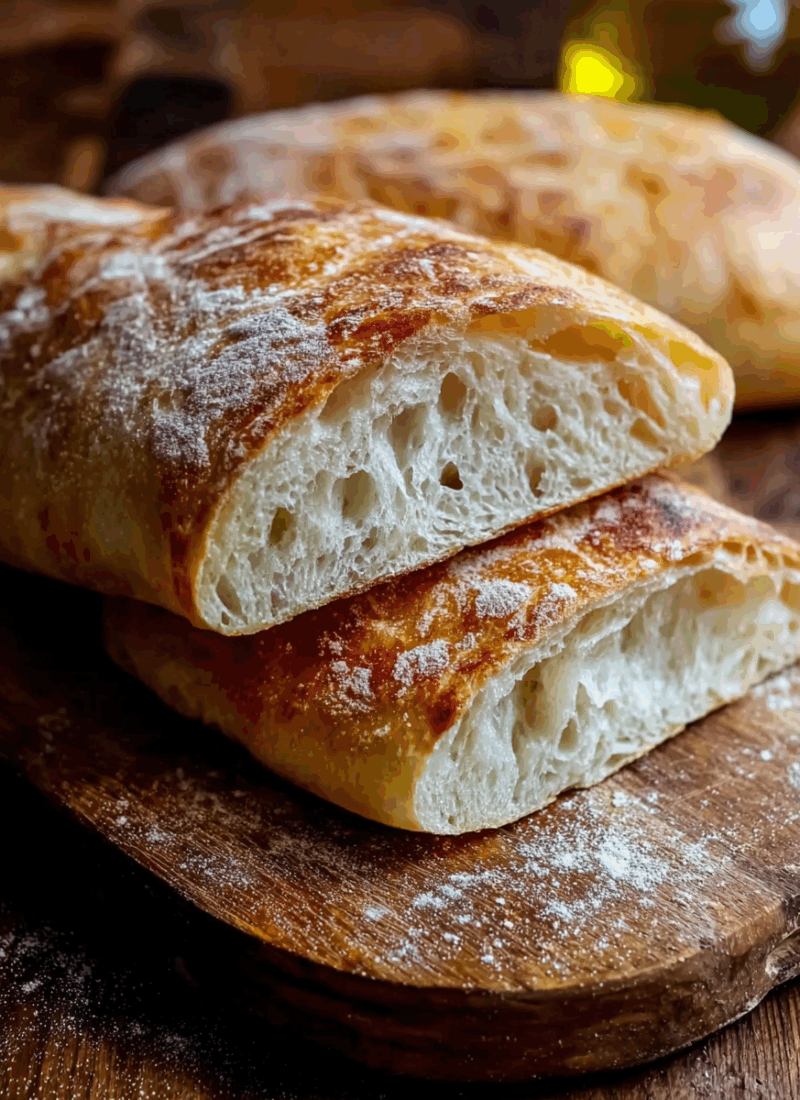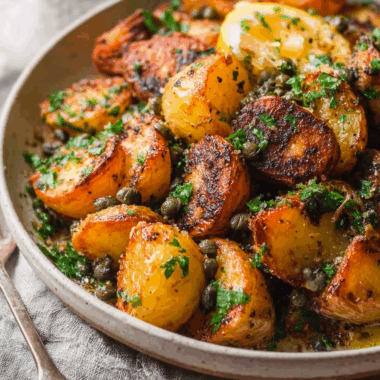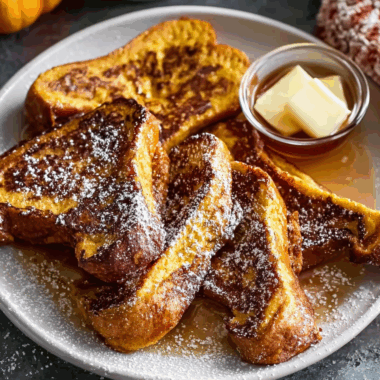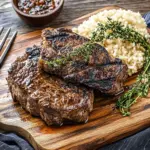This Ciabatta bread is a rustic and airy loaf with a perfect soft interior and a crispy crust. Made from simple ingredients, this recipe uses a poolish starter to develop the signature open crumb and chewy texture that ciabatta is known for. Whether you’re making sandwiches or enjoying it with olive oil, this homemade ciabatta bread is sure to impress.
Full Recipe:
Ingredients
For the Poolish (Starter):
-
1 cup all-purpose flour
-
1 cup water
-
1/4 teaspoon active dry yeast
For the Dough:
-
3 cups all-purpose flour (plus extra for dusting)
-
1 teaspoon salt
-
1 teaspoon active dry yeast
-
1 ¼ cups room temperature water
-
2 tablespoons olive oil
Directions
-
Make the Poolish (Starter): The night before baking, combine 1 cup of flour, 1 cup of water, and 1/4 teaspoon of yeast in a bowl. Stir until well combined, cover with plastic wrap, and let it sit at room temperature for 12-16 hours.
-
Mix the Dough: In a large bowl, combine the remaining 3 cups of flour, 1 teaspoon salt, and 1 teaspoon yeast. Add the poolish starter, 1 ¼ cups water, and 2 tablespoons olive oil to the flour mixture. Stir until the dough forms a sticky, shaggy mass.
-
Knead the Dough: Transfer the dough onto a floured surface. Gently fold and stretch the dough for about 10 minutes, adding small amounts of flour if needed, until it becomes smooth and elastic.
-
First Rise: Shape the dough into a ball and place it in a lightly oiled bowl. Cover with a towel or plastic wrap and let it rise for 1 ½ to 2 hours, or until doubled in size.
-
Shape the Dough: Once risen, gently deflate the dough and transfer it to a floured surface. Divide it into two portions for smaller loaves or keep it as one large loaf. Shape into a rustic rectangle, handling it gently to preserve the air pockets.
-
Second Rise: Place the shaped dough on a floured baking sheet or parchment paper. Cover with a towel and let it rise for 45 minutes to 1 hour, until it has puffed up.
-
Preheat the Oven: About 30 minutes before baking, preheat your oven to 450°F (230°C). If you have a baking stone, place it in the oven while preheating. Optionally, place a pan of water in the oven to create steam for a crispier crust.
-
Bake: Dust the top of the dough with a little flour and bake for 25-30 minutes, or until golden brown and hollow-sounding when tapped on the bottom.
-
Cool: Remove the ciabatta from the oven and cool on a wire rack before slicing. Allow it to cool for at least 30 minutes for the best texture.
Nutrients (Per Slice)
-
Calories: 160
-
Total Fat: 2 g
-
Saturated Fat: 0 g
-
Unsaturated Fat: 2 g
-
-
Carbohydrates: 31 g
-
Fiber: 2 g
-
Sugars: 0 g
-
-
Protein: 4 g
-
Cholesterol: 0 g
-
Sodium: 200 mg
-
Iron: 5%
-
Calcium: 1%
This ciabatta recipe yields a rustic, airy loaf with a slightly chewy texture inside and a crispy golden crust outside—perfect for sandwiches or served with olive oil.
The Magic of the Poolish Starter
The secret to the airy, open crumb and chewy texture of ciabatta lies in the poolish starter. A poolish is a type of pre-ferment made from equal parts water and flour, combined with a small amount of yeast. The starter is left to ferment overnight, allowing the flavors to develop and creating a dough with more depth and a complex flavor profile. This step enhances the bread’s natural tanginess, richness, and texture, making it an essential part of authentic ciabatta.
By allowing the poolish to rest for 12-16 hours, the fermentation process develops the structure of the dough, which contributes to the holes and airy texture of the finished loaf. While the dough might seem a bit sticky and challenging at first, this step guarantees a ciabatta with the perfect crumb once baked. It’s well worth the wait and the effort, especially for a loaf that’s so satisfying and flavorful.
Perfectly Rustic Texture
Ciabatta bread is known for its rustic, slightly irregular shape and large, open crumb. This is a direct result of the gentle handling of the dough during the shaping process, which preserves the air pockets that form during the rise. The dough is relatively wet and sticky compared to typical bread dough, which is why it’s important to handle it gently. The result is a bread with a chewy and airy texture that’s perfect for holding onto flavorful spreads or hearty fillings.
Once baked, the ciabatta loaf features a crisp, golden crust that adds a wonderful contrast to its soft, fluffy interior. The crispy exterior is achieved by baking the bread at a high temperature, often with the option of using steam in the oven. The steam helps create a crust that is both crunchy and light, ensuring that each bite offers the perfect balance of crunch and chew.
Simple Ingredients, Big Results
What makes ciabatta bread so special is that it’s made with just a few basic ingredients—flour, water, yeast, and salt. The magic comes from the careful preparation and fermentation of the dough. The poolish starter contributes to the complexity of the flavor, and the dough itself is simple but effective. Olive oil is often added to the dough to provide a hint of richness, making it perfect for sandwiches, bruschetta, or simply enjoying with olive oil and balsamic vinegar.
The simplicity of the ingredients also makes ciabatta bread versatile. You can enjoy it with just about anything, from roasted vegetables and cheese to cured meats and spreads. Its versatility makes it a perfect bread for every occasion, whether it’s a casual dinner or a more sophisticated appetizer.
Step-by-Step Process for Making Ciabatta Bread
While the process may take some time, making ciabatta bread is a rewarding experience. Here’s a breakdown of the key steps involved:
-
Preparing the Poolish: The night before baking, prepare the poolish by combining equal parts water and flour with a small amount of yeast. Let it ferment overnight to develop flavor.
-
Mixing the Dough: The next day, mix the poolish with more flour, salt, yeast, olive oil, and water to form the dough. The dough will be sticky and shaggy at first, but that’s exactly what you want for the ideal ciabatta texture.
-
Kneading the Dough: Knead the dough on a floured surface for about 10 minutes, stretching and folding to develop elasticity. This step is essential for achieving the perfect chewiness.
-
Rising the Dough: Let the dough rise for 1 ½ to 2 hours in an oiled bowl, doubling in size. This is where the dough gains structure and airiness.
-
Shaping the Dough: Once the dough has risen, gently deflate it and shape it into a rustic rectangle, preserving the air pockets that give ciabatta its unique texture.
-
Second Rise: Let the shaped dough rise again for 45 minutes to 1 hour, puffing up and developing further airiness.
-
Baking the Ciabatta: Preheat your oven to 450°F (230°C). Optionally, use a baking stone for better heat retention and place a pan of water in the oven to create steam for a crispy crust. Bake the ciabatta for 25-30 minutes until golden brown.
-
Cooling: Allow the ciabatta to cool on a wire rack for at least 30 minutes before slicing. This ensures the texture sets and the bread is easy to slice.
Baking Tips for Perfect Ciabatta
-
Use the Right Flour: For the best results, use high-quality all-purpose flour. Some bakers recommend a blend of all-purpose and bread flour for a chewier texture, but all-purpose flour works perfectly well for ciabatta.
-
Handle the Dough Gently: The key to ciabatta’s open crumb is the handling of the dough. Be gentle when shaping the dough to preserve the air pockets that form during the fermentation process.
-
Use Steam for a Crisp Crust: If you want a golden, crispy crust, place a pan of water in the oven while the bread bakes. The steam helps to create a crisp, shiny crust on the bread, which is a hallmark of well-made ciabatta.
-
Bake at a High Temperature: High heat is essential for creating the perfect crust on ciabatta. Baking at 450°F (230°C) ensures that the bread has a crispy exterior and a soft, chewy interior.
-
Let It Cool: It’s tempting to cut into the ciabatta right away, but letting it cool for at least 30 minutes helps the texture set, making it easier to slice and giving it the ideal crumb structure.
Perfect Pairings for Ciabatta Bread
Ciabatta bread is perfect for many occasions and can be paired with a variety of dishes:
-
Sandwiches: The rustic texture of ciabatta makes it ideal for hearty sandwiches. Layer it with cured meats, cheese, and fresh vegetables, or use it for paninis and grilled sandwiches.
-
Olive Oil and Balsamic Vinegar: For a simple and delicious appetizer, slice the ciabatta and serve it with high-quality olive oil and balsamic vinegar for dipping.
-
Soups and Stews: Ciabatta is great for dipping into soups and stews. Its chewy texture makes it a perfect companion to rich, flavorful broths and creamy soups.
-
Bruschetta: Ciabatta is excellent for making bruschetta, topped with diced tomatoes, garlic, basil, and olive oil for a classic Italian appetizer.
Nutritional Information
Each slice of ciabatta contains approximately 160 calories, 2 grams of fat, 31 grams of carbohydrates, and 4 grams of protein. With its moderate fat content and decent amount of fiber, it’s a balanced bread option for a variety of meals. While it’s not low in calories, its rich texture and versatility make it a satisfying choice for those looking to enjoy fresh, homemade bread.
Conclusion
Homemade ciabatta bread is a treat that’s both satisfying to make and delicious to eat. The poolish starter creates a loaf with an open crumb and chewy texture, while the high-heat baking process results in a golden, crispy crust. Whether you’re enjoying it as a sandwich, with olive oil, or alongside a hearty meal, this ciabatta bread is sure to impress with its rustic charm and perfect texture. Give this recipe a try, and you’ll never look at store-bought ciabatta the same way again.








